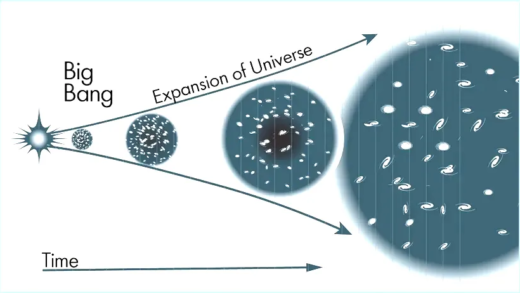This article clarifies the differences between weather and climate, detailing how they are measured, their interconnections, and the duration of climate change. Weather is short-term, while climate is long-term, influenced by various factors including human activities. Understanding these concepts is vital for addressing climate-related challenges.
Weather vs Climate: Understanding the Differences and Their Impact
Definition of Weather: What is it?
Weather refers to the short-term atmospheric conditions in a specific area. It encompasses various elements such as temperature, humidity, precipitation, wind speed, and atmospheric pressure. For instance, when someone checks the weather forecast, they are typically looking for information on whether it will be sunny, rainy, or windy that day. This definition highlights that weather can change rapidly, sometimes even within hours, making it a dynamic aspect of our environment.
Components of Weather: What Makes It Tick?
The components of weather are crucial for understanding how it operates. Here are the main elements:
- Temperature: Measures how hot or cold the atmosphere is.
- Humidity: Indicates the amount of moisture in the air.
- Precipitation: Includes rain, snow, sleet, or hail that falls from clouds.
- Wind: Describes the movement of air, which can vary in speed and direction.
- Atmospheric Pressure: Refers to the weight of the air above us, influencing weather patterns.
These elements interact in complex ways to create the weather we experience daily. For instance, high humidity combined with high temperatures can lead to thunderstorms.
Weather Events Examples: Real-Life Scenarios
Weather events can manifest in various forms, often impacting daily life. Here are a few examples:
- Thunderstorms: Characterized by heavy rain, lightning, and thunder, they can lead to flash flooding.
- Heatwaves: Extended periods of excessively hot weather, which can cause health risks.
- Snowstorms: Heavy snowfall that can disrupt travel and daily activities.
- Hurricanes: Powerful storms that can cause severe damage and flooding.
Understanding these weather events helps individuals prepare and respond effectively to changing conditions, emphasizing the importance of staying informed.
Difference Between Weather and Climate: Clarifying the Terms
The difference between weather and climate is fundamental to understanding our atmosphere. Weather is the short-term state of the atmosphere at a specific time and place. It changes frequently and can vary from hour to hour. In contrast, climate refers to the average weather conditions in a region over a long period, typically 30 years or more. Think of weather as your daily outfit choice, while climate is your entire wardrobe. For example, a hot day in winter might be unusual (weather), but a mild winter in a region known for its harsh winters indicates a shift in climate.
Components of Climate: What Defines It?
When discussing climate, several key components come into play:
- Temperature: Average temperatures help define a climate zone.
- Precipitation: The total amount of rain or snow received over a period.
- Humidity: Average moisture levels in the air.
- Wind Patterns: Typical wind directions and speeds that affect climate.
- Seasonal Variations: Changes in weather conditions throughout the year.
These elements interact over decades, resulting in distinct climate patterns. For instance, a region with high precipitation and mild temperatures typically has a temperate rainforest climate.
Climate Patterns Examples: Recognizing Trends
Recognizing climate patterns is essential for understanding long-term changes. Here are some examples:
- El Niño and La Niña: These phenomena influence global weather patterns, causing variations in rainfall and temperature.
- Tropical Climate: Characterized by high temperatures and significant rainfall year-round, typical of equatorial regions.
- Desert Climate: Very low precipitation levels and high temperature variations between day and night.
- Polar Climate: Cold temperatures with little precipitation, primarily found in the Arctic and Antarctic regions.
These examples highlight how climate patterns can significantly impact ecosystems and human activities, underlining the importance of monitoring climate trends over time.
Measuring Weather and Climate: How Do Scientists Do It?
Measuring weather and climate involves various sophisticated tools and techniques. Scientists utilize instruments such as:
- Thermometers: To measure temperature accurately.
- Barometers: To gauge atmospheric pressure changes.
- Hygrometers: For humidity levels in the air.
- Anemometers: To assess wind speed and direction.
- Rain Gauges: For measuring precipitation.
These instruments collect data that meteorologists analyze to forecast weather and understand climate trends. For instance, weather stations across the globe continuously record data, which is then fed into computer models. This information helps scientists predict short-term weather patterns and assess long-term climate changes.
Impact of Weather on Climate: Can They Affect Each Other?
The relationship between weather and climate is intricate. Weather can have short-term effects on climate patterns. For example, a series of unusually hot days may not only indicate a weather phenomenon but can also signal a shift in climate over time. Here are a few points illustrating this connection:
- Extreme Weather Events: Events like hurricanes or droughts can alter local climates by affecting vegetation and soil moisture.
- Feedback Loops: Increased temperatures can lead to more evaporation, which in turn can enhance rainfall in certain areas, impacting the climate.
- Long-Term Trends: Persistent weather changes, such as prolonged heatwaves, may indicate climate change, leading to alterations in ecosystems.
This interplay emphasizes the importance of monitoring weather patterns as they can provide early warnings about potential shifts in climate.
Climate Change Duration: How Long Does It Take?
Understanding the duration of climate change is crucial. Climate change does not happen overnight. It often unfolds over decades or even centuries. The following factors contribute to this duration:
- Natural Variability: Earth’s climate has always experienced natural fluctuations due to volcanic eruptions, solar radiation changes, and ocean currents.
- Human Influence: Activities such as burning fossil fuels and deforestation have accelerated climate change, but the effects may take years to manifest fully.
- Adaptation and Mitigation Efforts: Efforts to combat climate change can influence how quickly we see changes in climate patterns.
Recognizing that climate change is a gradual process helps in formulating effective strategies for mitigation and adaptation, emphasizing the need for ongoing research and monitoring.





Comments are closed.